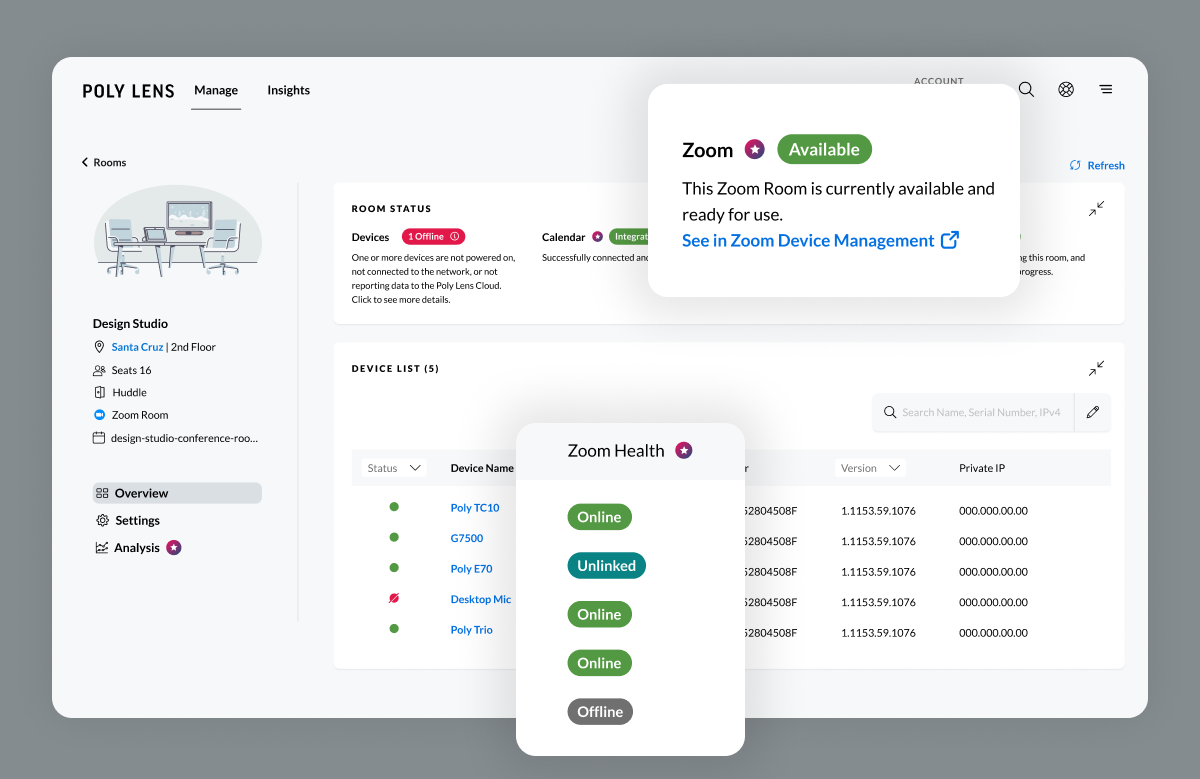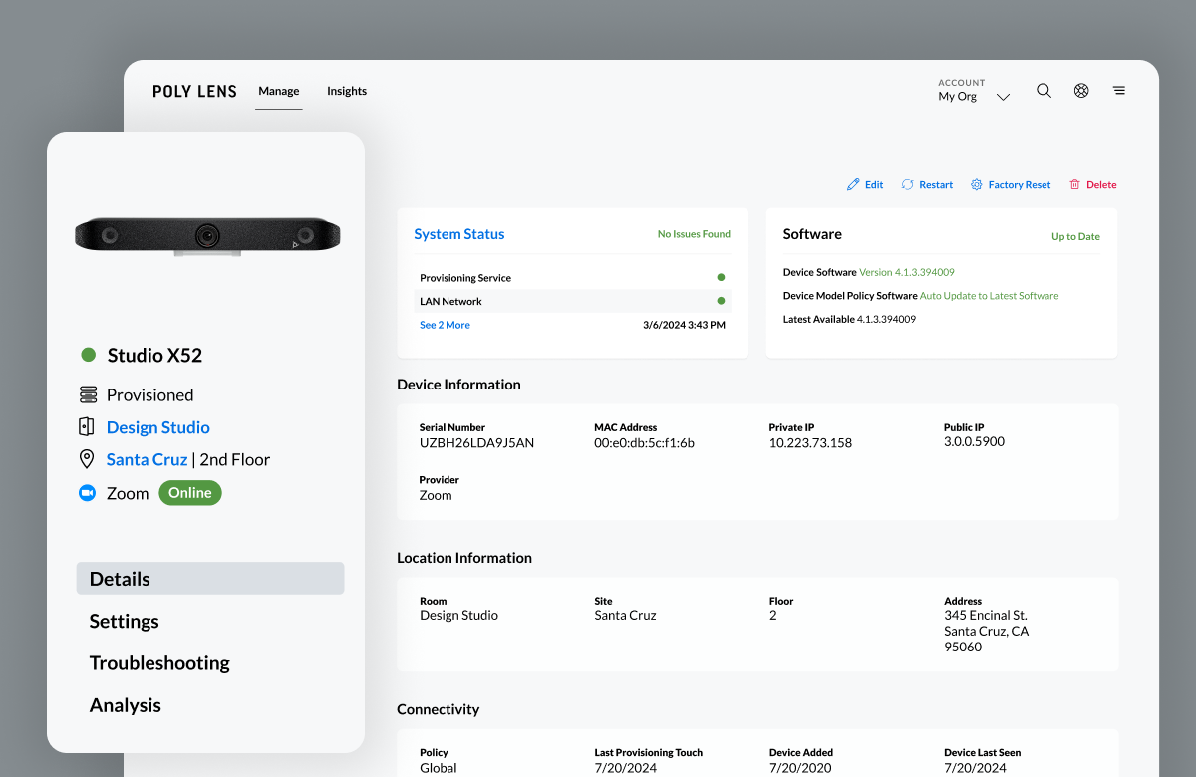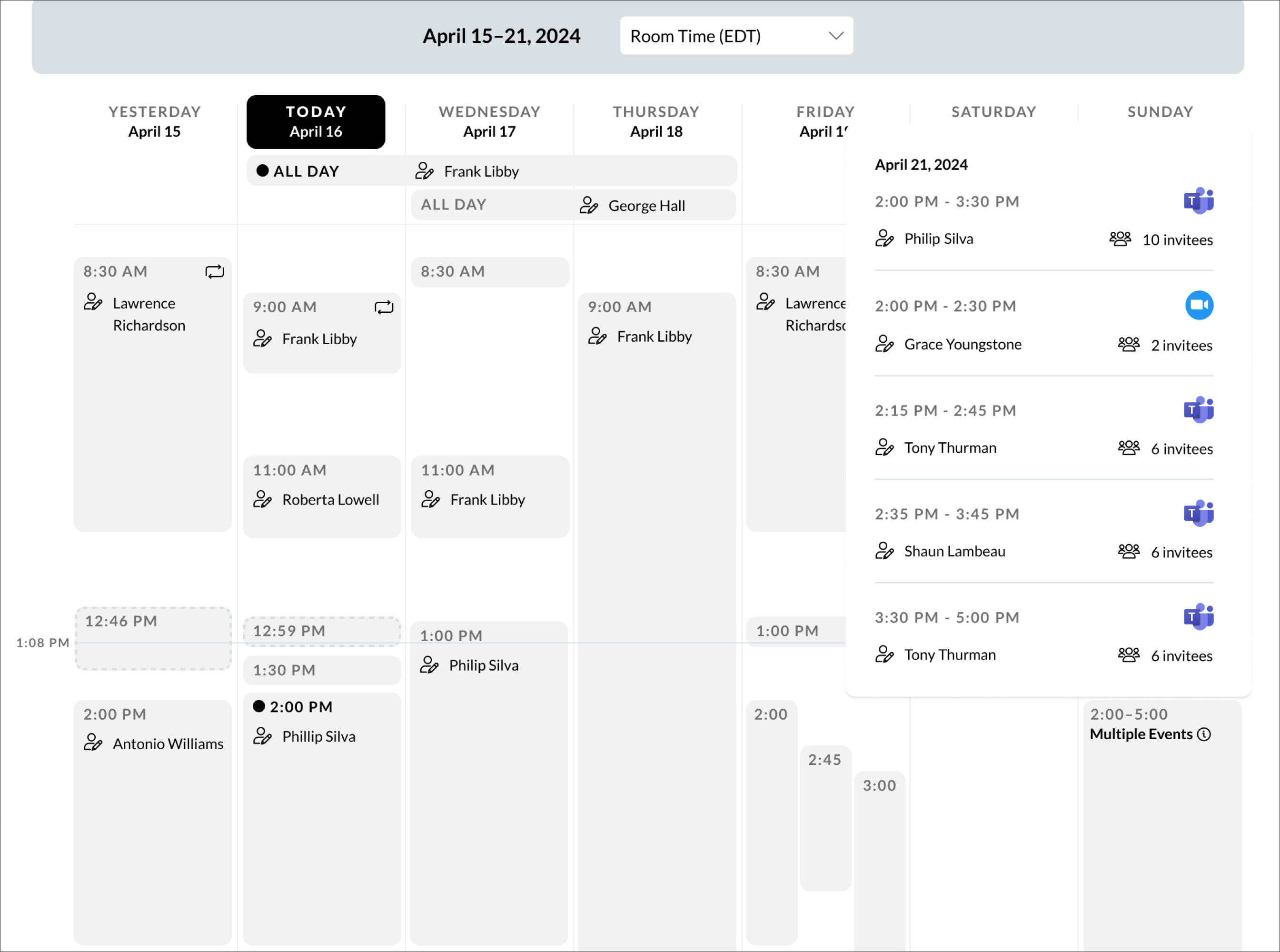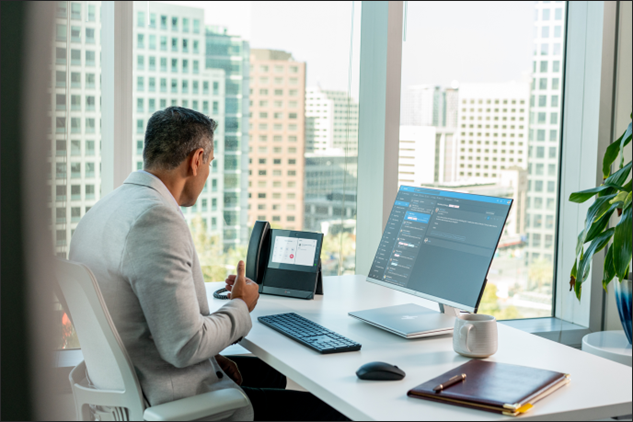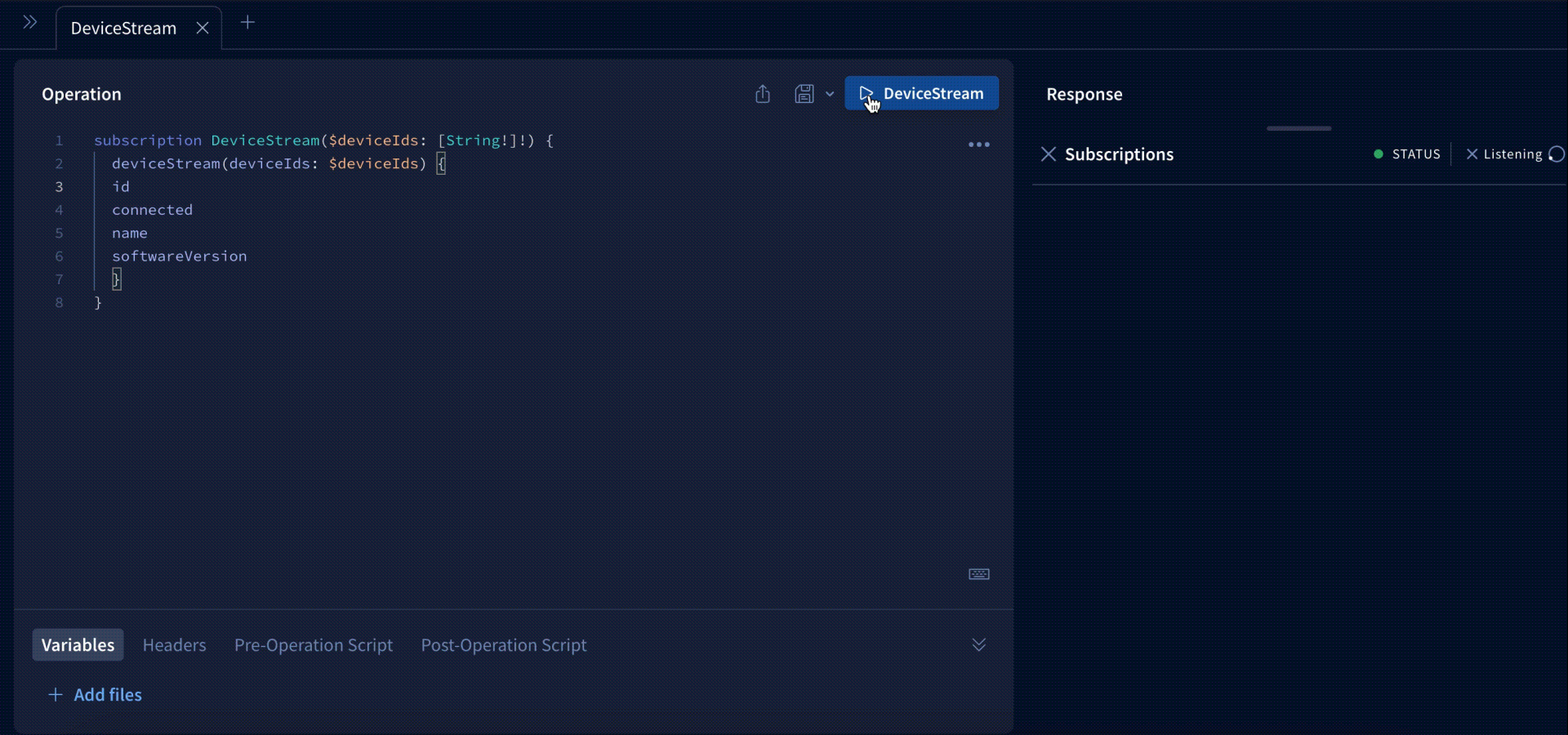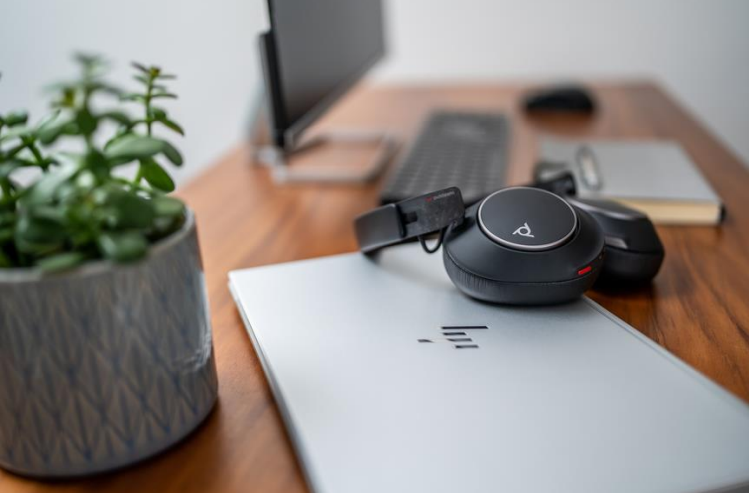Today, Poly is excited to introduce Poly Lens Room, providing you the ability to connect your PC-based room to your Poly Lens Account (tenant). Rounding out the Poly Lens solution for IT organizations, Poly Lens Room is an application that enables you to configure and manage your Poly audio, video, and touch controller devices attached in a PC-based conference room. This application allows you to connect your conference room Mini-PC and any connected Poly USB devices to the Poly Lens Cloud portal for a remote inventory view, device monitoring and device management.
Poly Lens Room provides a comprehensive device inventory view for those who have PC-based conference rooms deployed and haven’t had a complete device inventory view in the past. Simply download, install, and retrieve a PIN code from Poly Lens Room to onboard you PC Room into your Poly Lens Cloud Account. After onboarding into Poly Lens, you can view the PC, any Poly connected devices and 3rd party devices with a serial number under Manage > Inventory in Poly Lens Cloud. Furthermore, when onboarding you can name a Room in your Poly Lens Cloud Account that will be auto generated providing you a full Room Inventory for simpler device management. Lastly, each device will have a Device Details page associated with it for additional Device Details where you can view the Online or Offline status of the connected devices in your conference room.
In addition to Inventory Management, Poly Lens Room enables you to remotely manage your PC Room Devices from your Poly Lens Cloud Account. This includes the ability to remotely restart the PC or attached Poly video devices and manage device firmware updates via Policy for Poly video devices and Poly Sync speakerphones. If issues arise and you need help, logs for the Poly Lens Room app will be available in your Poly Lens Account (tenant) on the Room App detail page under Diagnose > Fetch logs. Once onboarded into Poly Lens, the Poly Lens Room will be the gatekeeper for firmware updates between Poly Lens and Windows Updates to assure your devices are updated to the version of software you prefer based on your Poly Lens Device Policy.
This is just the start of the journey, there are a lot more features and functionality coming to Poly Lens Room in the future. Poly Lens Room will auto update to the latest software version found in Poly Lens after being onboarded without any user action or interaction.
There is no reason to wait, find out more about the new Poly Lens Room App by visiting Poly Lens Help and stay up-to-date by following the latest Poly Lens Room App Release Notes.
